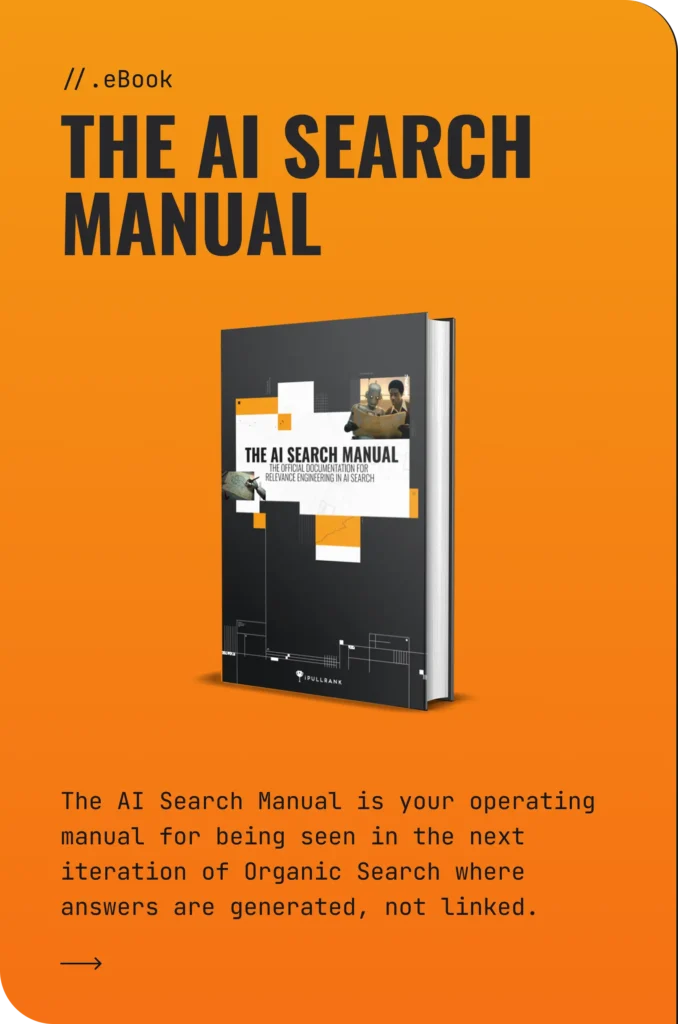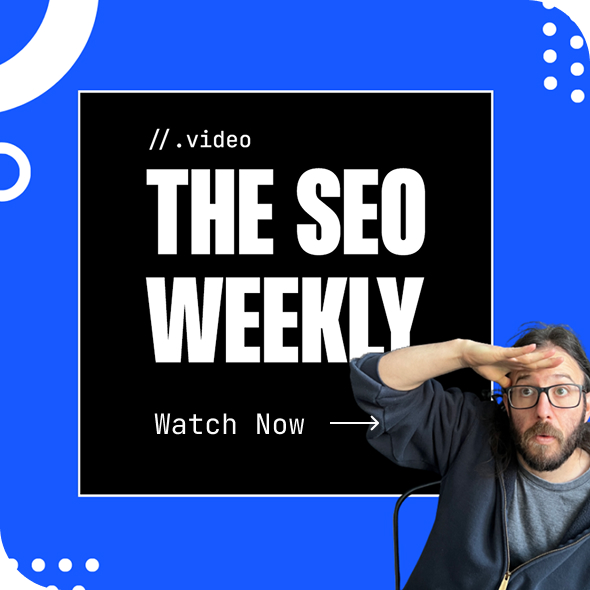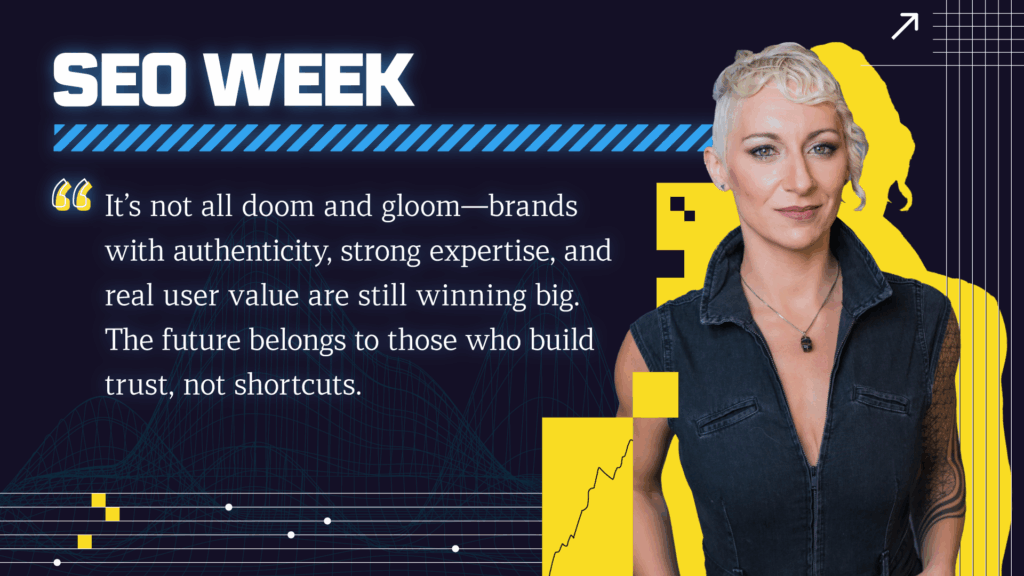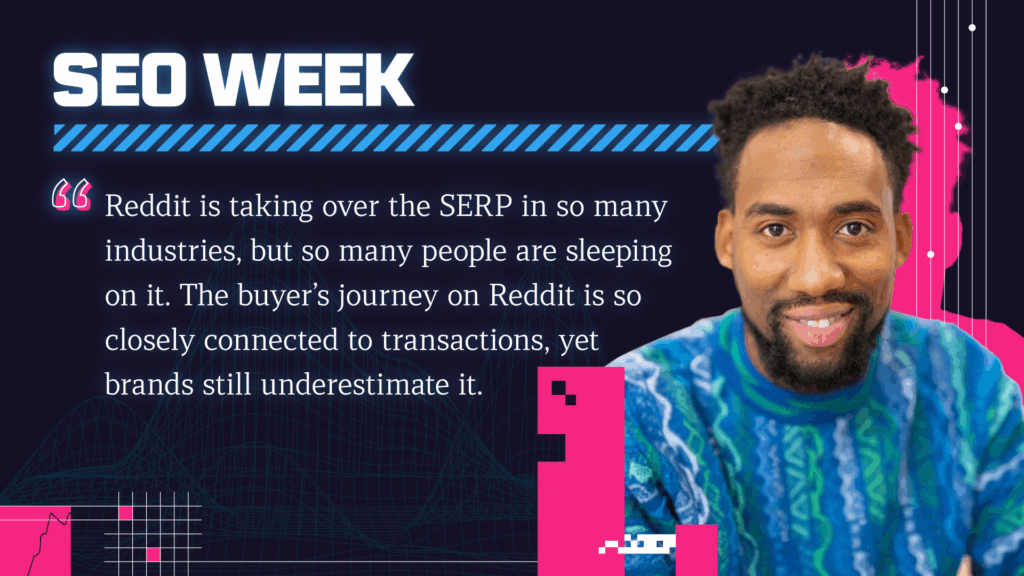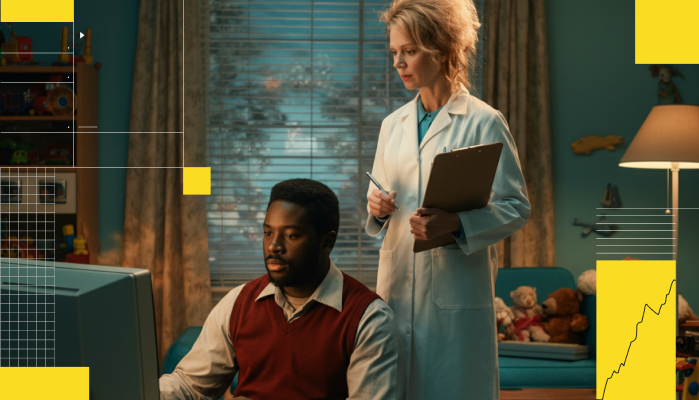July 11th marks the 25th anniversary of Metallica’s testimony before the Senate against Napster. The death of the free music-sharing platform sparked a copyright victory for the musicians who were never compensated for the music that was shared (or stolen) via the file-sharing service.
Like a broken record or a ravaged and entangled mixtape, history always repeats. A quarter of a century after Metallica’s Senate testimony, the battle waged over intellectual property and the price owed to the creators behind the music, visual arts, or written works once again is in the hands of the Judicial Branch. Free music may be a relic of the 90s, but free content is everywhere. The open-source, free spirit of Napster now lives on in AI.
While Napster burst open a Pandora’s music box for musicians, AI’s learning model and its seemingly infinite amount of knowledge has been accused of wreaking financial havoc across artistic genres. Intelligence, after all, is artificial. But artificiality began with originality. At the heart of this sentiment lies the problem, the moral dilemma, and the stream of lawsuits. Writers, musicians, and other creatives are now fighting for the value of their work and the use of their intellectual property.
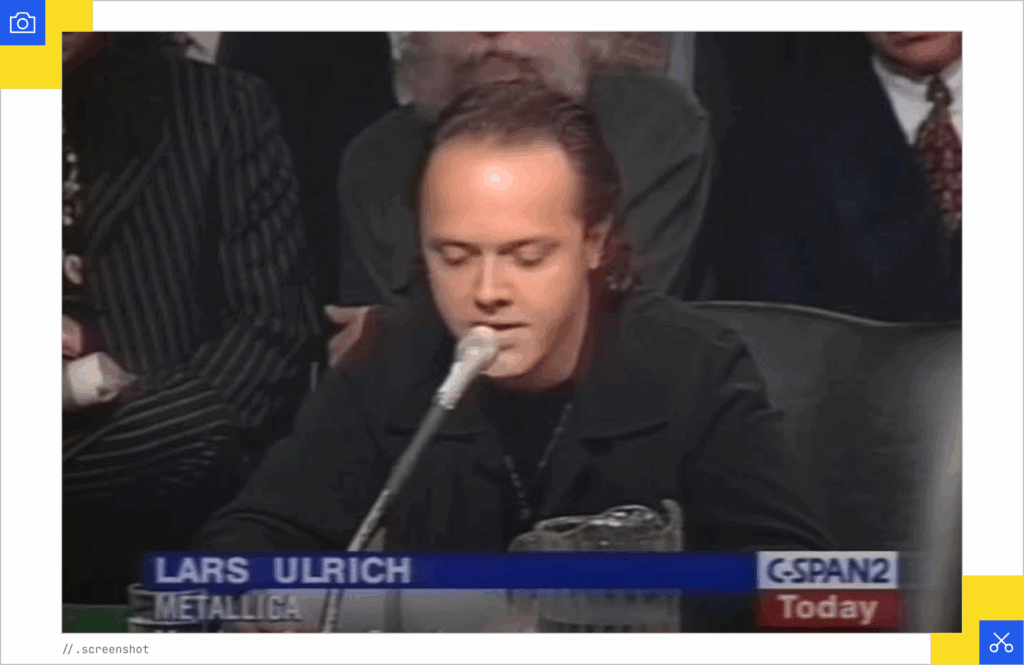
Copyrights and Fair Use: When Opinions Vary
Numerous writers have filed lawsuits against AI platforms (Anthropic and Meta, notably) alleging copyright infringement. Writers argued that the platforms trained on their books without their consent or any financial compensation for the integration of their work into the machine’s repertoire of knowledge.
Yet, both Meta and Anthropic recently left court victorious. A summary judgement from Judge William Alsup in favor of Anthropic noted that while the AI platform was trained on copyrighted material, “…the training was fair use.” However, Alsup added that the potentially pirated materials used to train the Anthropic AI technology was an entirely separate matter.
Meta’s case ended with a questionable victory. Judge Vince Chhabria gave a win to Meta, but his decision took pointed aim at Judge Alsup’s fair use ruling and opened the door for future copyright lawsuits. Chhabria wrote:
“Judge Alsup focused heavily on the transformative nature of generative AI while brushing aside concerns about the harm it can inflict on the market for the works it gets trained on. Such harm would be no different, he reasoned, than the harm caused by using the works for “training schoolchildren to write well,” which could “result in an explosion of competing works.” But when it comes to market effects, using books to teach children to write is not remotely like using books to create a product that a single individual could employ to generate countless competing works with a miniscule fraction of the time and creativity it would otherwise take. This inapt analogy is not a basis for blowing off the most important factor in the fair use analysis.”
Fair Use Abuse? SEO, AI, and Marketing Best Practices
After Chhabria’s opinion was released, more lawsuits emerged from creatives. AI may have the perceived edge in the courtroom but the battle between copyright and fair use continues, leaving behind more questions than answers as AI weaves tighter into the production stream of many marketing teams.
SEO and marketing professionals face a multifaceted set of challenges as they battle and embrace AI. Like Napster, AI and its many iterations may not be fully good or evil, friend or foe. While Napster’s free file sharing model ran afoul of copyright laws, its design set the stage for the way music was delivered to consumers and how it was shared.
What comes next for AI from a legal perspective is unknown. Yet, the question of how AI should be used professionally by marketers highlights the need for greater transparency and discussion.
No matter what boundaries an agency or marketing team sets for the use of AI in content production and task workflow, there are three major points worth considering as the ascent of AI propels the industry into a new evolution of strategic design.
#1: AI and Content Creation: The Machine Simplifies and Streamlines
AI’s ability to create content, simplify processes, and answer nearly any query and prompt propelled the technology into the toolkits of marketers across the globe. When writing web content, AI’s strength is its design to cross analyze a vast library of information and synthesize key data into the points the user needs and demands. The human touch is nuanced, while the machine offers speed, agility, and ideation across a variety of subtopics.
AI tools are unmatched for outlining articles and blogs, researching key SEO subheads, or to output topic ideation for editorial content. ChatGPT and other AI tools can deliver results instantly; while some of these results may be imperfect, even the less than stellar ideas can lead to more streamlined discussions for the team.
The machine saves time and money, automating processes that typically lead to agency workload bottlenecks. At iPullRank, we integrate AI into content ideation, optimization, research, and development to streamline and scale our processes.
#2: Operationalizing AI: AI Created, Human Reviewed
AI’s tools allow the user to adjust the voice and tone of an article with a simple prompt. Casual, expert-level, compassionate? AI pivots accordingly.
Yet, AI learns by training on the cadence, style, voice, and structure of other writers and creators. Whose voice does AI mimic, whose voice are we poaching when AI delivers a blog, a tagline, or any type of content? The voice is not AI. The voice is Legion, for the voices in AI are many. Details matter in a lawsuit and in the marketer’s toolkit, the details can be even more devilish.
Adaptation to technology means survival. Task automation enhances profitability. Marketers have embraced AI for these and many other reasons. However, none in marketing can or should ignore the litigation from the creators.
Using AI to generate content saves time, but its accuracy (or lack thereof) poses a set of challenges and liabilities. The output of AI is the accoutrement, but not the entrée. Entrusting AI to deliver full content without oversight is akin to throwing the dice for a game of content craps.
There remains a responsibility when using and wielding any type of technology. Ethics transcends beyond Terms of Service and best practices. Understanding the political, artistic, and capitalistic intent and impact of AI requires that users—marketers—critically explore how and why they use it. How is it shaping content? How does the technology enhance or impede deliverables, results, and, crucially, profitability (for the agency AND the client)?
At iPullRank, we leverage AI to complement the content production process, relying on the human touch to deliver the most dynamic and effective copy. It’s crucial now more than ever for marketing agencies to create their own guidelines that inform the use of AI and its implementation within content and copy workflows.
A Marketing Litmus Test For AI
AI is a tool, not a human. The technology should complement the human touch of content creation. When using AI beyond basic outlines or simplistic tasks, marketers need to apply a simple yet effective litmus test to all AI output, ensuring accuracy, trust, and originality:
- Fact-checking: Has data (facts, figures, etc.) been substantiated through fact-checking?
- Plagiarism: Does the content mirror any existing works? Has a plagiarism tool been applied to all content?
- Citations: Are citations included for facts, statistics, or viewpoints that exist in other published content?
Marketers must understand that every result generated by AI potentially includes content, wordplay, and cadence derived from original works previously published. Crucially, not all AI results are accurate. AI is prone to hallucinations, but it also cannot discern nuance and humor. April Fool’s content has been cited as truth by AI.
Fact-Checking: Can You Verify the Truth?
AI hallucination is a known flaw of the machine. All AI output must be human-verified for accuracy. Assuming that any fact, figure, or statement is true poses a risk to an agency and potentially its clients. Everything must be checked.
Plagiarism Takes Many Forms
The education system relies on plagiarism checkers to maintain honesty and accountability of students. Every marketer needs to use these tools to uphold the integrity of their own content, specifically when content is derived from artificial intelligence. Plagiarism software cannot capture every nuanced similarity, but some tools offer peace of mind for content.
Cite Every Source
Google’s AI platform Gemini provides hyperlinks to all sourced content. This aids marketers in providing citations in any AI-derived works. However, not every AI platform includes citations. All facts and figures must be cited to ensure accuracy, transparency, and trustworthiness of the content. Fake news is rampant, and marketers should not contribute to the problem. Marketers owe the original creators’ citations to their works for the data, insights, or statistics the original writer provided.
#3: AI and Search Traffic: Keep Calm and Chegg On
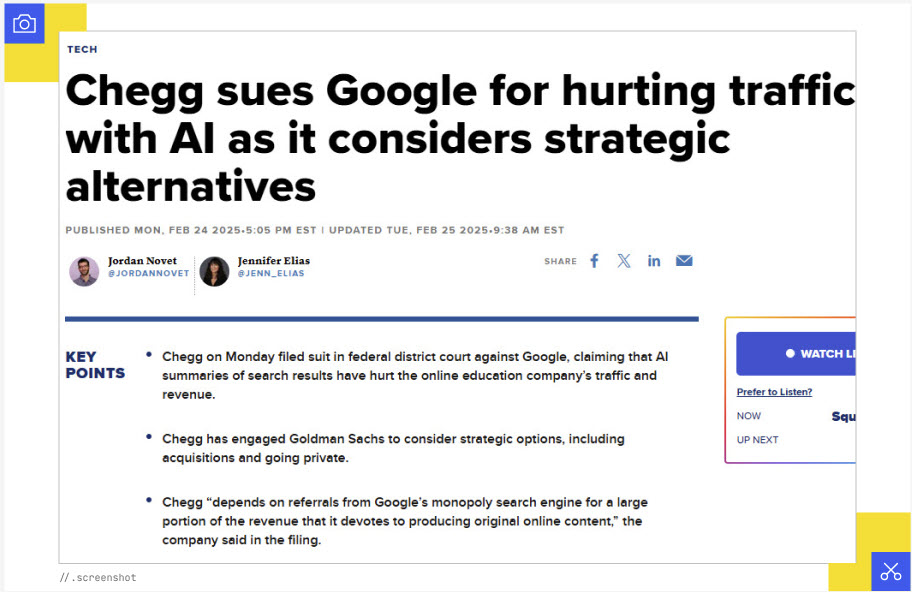
Google’s AI Overviews now dominate the SERP, leading to a chaotic search traffic jam. SEO professionals are seeking solutions, Google is thriving, and Chegg is throwing down the gauntlet with a lawsuit against Google.
Chegg’s lawsuit alleges copyright infringement based upon how Google’s AI Overviews summarize content. Chegg asserts that Google’s new AI integration impedes users from exploring other sites (or, more specifically, Chegg’s site), as the information is now summarized for the user via AI.
These overviews are now a crucial component of search engine optimization. Gaining rankings and visibility means snagging a key Google AI overview. While the Chegg lawsuit could substantially impact this feature, AI Overviews on Google remain the new goal for marketers.
In light of the Chegg lawsuit, marketers must eye the AIO more carefully for clients. If Facebook’s “pivot to video” led to the implosion of online written content, could AIO minimize search traffic for smaller businesses?
The Duality of Gemini: The Yin and Yang of AIO Ranking
Marketers face a dualism with AIO and Gemini. While the top-of-the-SERP appearance is a gain, avoiding it also is a boon for traffic. Instead of targeting top-of-the-funnel keywords, more SEO professionals are eyeing the bottom of the funnel to amp up traffic and avoid an AIO appearance for these high-intent queries.
Marketers need to balance the race to the top of AIO with the need to increase site traffic. A critical eye must delve deeper into the potential positives and negatives of ranking or appearing in AIO for each client.
Key points that all marketers must consider as AIO becomes the gold standard for SEO:
- Watch site/page traffic analytics carefully. Traffic analysis is important regardless. However, marketers must balance AIO appearances with SEO-driven tactics that allow the site to gain traffic. The top of the funnel yields AIO, but marketers can (and should) focus on middle to bottom-of-the-funnel to help traffic.
- Who appears in the AIO query space? For specific queries, do you want your client to share AIO space with a competitor? Or would the client benefit from holding court (and expertise) in another AIO query space? The answer differs per client and keyword, which is why the question is crucial to search intent and strategy.
- Is all data substantiated by citations? Is it accurate? Remember that AI cannot discern humor from facts. If a client posts a blog for April Fool’s Day and it ranks in AIO, consider the impact on trust, authority, and expertise. Be mindful of content direction moving forward in the realm of AI.
AI’s Future and the Senate Hearing Testimony Against Napster
As AI presents a poignant reminder of Metallica’s lawsuit against Napster, it’s important to remember the backdrop of that litigation. It’s also important to remember that Metallica and, notably Lars Ullrich (who was often lambasted because of the lawsuit), were not against music sharing or free music.
Metallica thrived during the ‘80s when teens copied tapes at home. Metallica sued Napster because they were never asked permission for their music to be shared online. This sentiment is one that is shared with many involved in the current glut of lawsuits against AI creators.
When testifying before the Senate on July 11, 2000, about Napster and music sharing, Lars stated:
“But how can we embrace a new format and sell our music for a fair price when someone, with a few lines of code, and no investment costs, creative input or marketing expenses, simply gives it away? [...] We have to find a way to welcome the technological advances and cost savings of the Internet while not destroying the artistic diversity and the international success that has made our intellectual property industries the greatest in the world. Allowing our copyright protections to deteriorate is, in my view, bad policy, both economically and artistically.”
AI—like Napster—will evolve. AI has transformed the way we create content, how we solve problems, and how we market to customers. Behind the machine hides the words, voices, knowledge, creativity, and perhaps even pain of the writers, journalists, artists, and others who helped power the artificial intelligence of the platforms we now use.
Are we entering a brave new world? A dystopian reality? AI is here to stay, but its ultimate impact is in the hands of those who use it.

